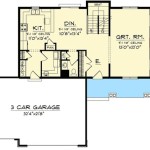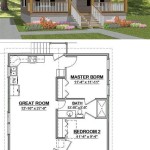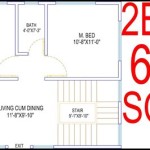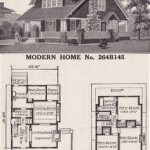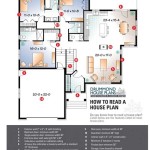Design Your Dream Home: Essential Plot Plans For Houses (PDF)
Creating a dream home begins not with paint colors or furniture choices, but with a solid foundation – the plot plan. A plot plan, also known as a site plan, is a scaled diagram that illustrates the proposed construction, existing site conditions, and pertinent legal and geographic information. This crucial document serves as a blueprint for the entire project, guiding everything from landscaping to utility connections. Accessing and understanding readily available resources, such as plot plan examples in PDF format, is essential for homeowners, builders, and architects alike. These PDF resources often provide templates, illustrative examples, and detailed explanations that demystify the process of creating an effective and comprehensive plot plan.
A well-executed plot plan is a vital tool for several reasons. It ensures that the proposed building complies with local zoning regulations and building codes, preventing costly setbacks and legal issues. It also aids in visualizing how the new construction will integrate with the existing landscape, considering factors such as drainage, sunlight exposure, and proximity to neighboring properties. Furthermore, it facilitates efficient planning for utility connections, including water, sewer, electricity, and gas lines. Finally, a detailed plot plan is indispensable for obtaining necessary permits and approvals from local authorities and for securing financing from lenders.
Understanding the common elements of a plot plan is crucial for its effective interpretation and application. These elements typically include property lines and dimensions, building setbacks, easements, existing structures and utilities, proposed construction details, topographic contours, landscaping features, and drainage patterns. Each of these components plays a significant role in the overall design and functionality of the property. The use of PDF resources allows for easy access to examples and explanations of these elements, enabling users to understand how they are represented graphically and how they contribute to the overall planning process.
Understanding the Key Components of a Plot Plan
A comprehensive plot plan contains several essential elements, each serving a specific purpose in guiding the construction process and ensuring compliance with regulations. Failing to accurately represent these elements can lead to project delays, costly rework, and even legal complications. Therefore, a thorough understanding of these components is paramount for anyone involved in residential construction or renovation projects.
Property Lines and Dimensions: These delineate the legal boundaries of the property, clearly defining the area available for construction. Accurate property lines are critical for determining setback requirements and preventing encroachments onto neighboring properties. Dimensions provide precise measurements of the property's length, width, and area, ensuring that the proposed construction fits within the legal boundaries.
Building Setbacks: These are the minimum distances that a building must be set back from property lines, streets, and other structures. Setback requirements are typically dictated by local zoning ordinances and serve to maintain adequate spacing between buildings, preserve public access, and prevent overcrowding. The plot plan must clearly indicate the proposed building's location relative to the setback lines.
Easements: Easements are legal rights granted to third parties to use a portion of the property for a specific purpose, such as utility access or drainage. The plot plan must identify any existing easements and ensure that the proposed construction does not interfere with these rights. Failure to respect easements can result in legal disputes and the need to relocate construction elements.
Existing Structures and Utilities: The plot plan must accurately depict all existing structures on the property, including buildings, fences, and retaining walls. It should also show the location of existing utilities, such as water lines, sewer lines, gas lines, and electrical conduits. This information is essential for avoiding damage to existing infrastructure during construction and for planning the connection of new utilities.
Proposed Construction Details: This is arguably the most important part of the plot plan, showing the location, dimensions, and orientation of the proposed building. It should include details such as the building's footprint, roof overhangs, porches, decks, and driveways. The proposed construction details must comply with setback requirements and other zoning regulations.
Topographic Contours: These lines represent the elevation of the land and are essential for understanding the site's topography and drainage patterns. Topographic contours help to identify areas that are prone to flooding or erosion and to plan for proper drainage management. The plot plan should show the existing topographic contours and any proposed grading or landscaping changes.
Landscaping Features: The plot plan should depict the proposed landscaping features, including trees, shrubs, lawns, and gardens. This information is important for visualizing the overall appearance of the property and for ensuring that the landscaping is compatible with the building's design and the surrounding environment. Landscaping can also play a role in drainage management and erosion control.
Drainage Patterns: A clear understanding of drainage patterns is critical for preventing water damage to the building and surrounding properties. The plot plan should show the direction of surface water flow and any proposed drainage improvements, such as swales, drains, and retention ponds. Proper drainage management is essential for protecting the building's foundation and preventing soil erosion.
Utilizing PDF Resources for Plot Plan Creation
The internet provides a wealth of resources for creating plot plans, with PDF documents being particularly valuable. These resources offer templates, examples, and instructions that can simplify the process, especially for those with limited experience in drafting. Utilizing these PDF resources can save time, reduce errors, and ensure that the plot plan meets all necessary requirements.
Plot Plan Templates: Many websites offer free or paid plot plan templates in PDF format. These templates provide a basic framework for creating a plot plan, with pre-drawn elements such as property lines, setback lines, and a north arrow. Users can then customize the template by adding their own property-specific information, such as building dimensions, utility locations, and landscaping features.
Example Plot Plans: Examining example plot plans in PDF format can provide valuable insights into how to properly represent different site conditions and construction details. These examples can serve as a guide for creating a plot plan that is both accurate and visually clear. By studying different examples, users can learn how to effectively communicate their design ideas to contractors, building officials, and other stakeholders.
Instructional Guides and Checklists: PDF documents often include detailed instructions and checklists that guide users through the process of creating a plot plan. These resources may cover topics such as measuring property lines, locating utilities, and complying with zoning regulations. By following these instructions and checklists, users can ensure that they have included all of the necessary information and that their plot plan is accurate and complete.
Software Tutorials: While some plot plans are still created manually, many architects and designers use specialized software programs to create them. PDF tutorials are often available for these programs, providing step-by-step instructions on how to use the software to create accurate and professional-looking plot plans. These tutorials can be particularly helpful for users who are new to the software or who want to learn advanced techniques.
Zoning Regulations Information: Local zoning regulations play a crucial role in determining the requirements for a plot plan. Many municipalities provide zoning regulations and guidelines in PDF format on their websites. These documents outline the specific rules that apply to different types of properties, including setback requirements, building height restrictions, and parking requirements. By consulting these resources, users can ensure that their plot plan complies with all applicable zoning regulations.
Saving Time and Money: Using PDF resources to create a plot plan can save both time and money compared to hiring a professional surveyor or architect. While professional assistance may be necessary for complex projects or when dealing with challenging site conditions, many homeowners can create a basic plot plan themselves using readily available resources. This can be particularly beneficial for smaller projects, such as adding a deck or shed to an existing property.
Common Mistakes to Avoid in Plot Plan Creation
Creating an accurate and effective plot plan requires attention to detail and a thorough understanding of the relevant regulations and guidelines. Several common mistakes can undermine the accuracy and usefulness of the plan, potentially leading to project delays, cost overruns, and legal complications. Avoiding these pitfalls is crucial for ensuring a successful construction project.
Inaccurate Property Lines: An inaccurate representation of property lines is one of the most serious mistakes that can be made in a plot plan. This can lead to encroachments onto neighboring properties, setback violations, and legal disputes. It is essential to obtain accurate property line information from a survey or deed and to carefully transfer this information to the plot plan.
Incorrect Setback Measurements: Failing to comply with setback requirements can result in the rejection of building permits and the need to relocate construction elements. It is crucial to consult local zoning regulations and to accurately measure and depict setback distances on the plot plan. Incorrect setback measurements can arise from misinterpreting zoning regulations or from using inaccurate measuring tools.
Omission of Easements: Overlooking existing easements can lead to legal disputes and the need to relocate construction elements. It is essential to research and identify any easements that affect the property and to clearly indicate their location and dimensions on the plot plan. Easements can be found in property deeds or by contacting the local municipality.
Failure to Show Existing Utilities: Neglecting to show the location of existing utilities can result in damage to these utilities during construction, leading to costly repairs and service disruptions. It is crucial to contact the local utility companies to obtain accurate information on the location of underground utilities and to depict this information on the plot plan.
Ignoring Topography and Drainage: Ignoring the site's topography and drainage patterns can result in water damage to the building and surrounding properties. It is essential to accurately depict topographic contours on the plot plan and to plan for proper drainage management. Failure to address drainage issues can lead to flooding, erosion, and foundation problems.
Lack of Detail: A lack of detail can make it difficult for contractors, building officials, and other stakeholders to understand the proposed construction. It is important to include all relevant information on the plot plan, such as building dimensions, material specifications, and landscaping details. A well-detailed plot plan will minimize the risk of misinterpretations and errors during construction.
Illegibility: An illegible plot plan is of little use to anyone. It is important to use clear and concise language, to use a consistent scale, and to ensure that all of the information is easily readable. Using a computer-aided design (CAD) program can help to create a professional-looking and legible plot plan. If creating a plot plan manually, using a fine-tipped pen and a ruler is highly encouraged.
By carefully considering these common mistakes and taking steps to avoid them, homeowners and builders can create accurate and effective plot plans that facilitate successful construction projects.

Free Home Plan American Design Concepts

Discover The Floor Plan For Dream Home 2025

House Plan Via Pascoli Sater Design Collection

Comfortable 1 Bedroom House Plan With Rear Garage And Deck Space

House Plan Drawing Samples 2d Drawings

Where You Can House Plans Live Home 3d

Humber House Mansion Plans Luxury

Free Simple Two Story House Plans Online Edit Available

House Planning Ideas Maximizing Space And Functionality

Top 15 House Plans Plus Their Costs And Pros Cons Of Each Design
Related Posts

